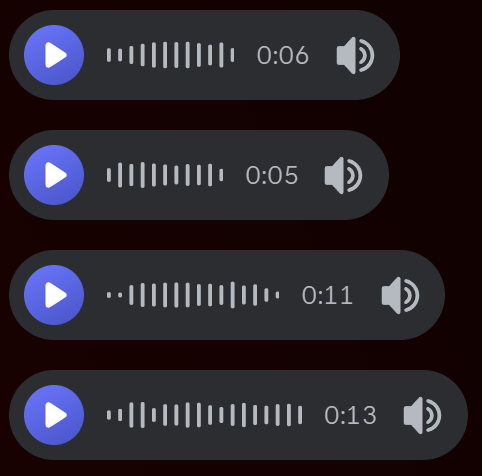In July 2025, the financial world is abuzz with discussions about potential Federal Reserve interest rate cuts, prompting homeowners to consider whether now is the right time to explore mortgage refinancing. With the average 30-year fixed mortgage rate hovering around 6.88%, a possible rate cut could lower home loan rates, offering opportunities to reduce monthly payments or adjust loan terms.
This article explores the current mortgage landscape, the impact of Fed policies, and how to decide if refinancing options are right for you, ensuring you can make informed financial decisions.
Current Mortgage Rates and Trends
As of July 18, 2025, the average 30-year fixed-rate mortgage stands at approximately 6.88% APR, according to NerdWallet. This rate has seen slight increases, up 11 basis points from the previous week and 23 basis points higher than a year ago. Meanwhile, Freddie Mac reported a slightly lower rate of 6.75% for the week ending July 17, indicating minor fluctuations within a narrow range under 7% (Freddie Mac). Experts note that rates have been volatile, with a peak of 7.04% in January 2025, retreating to the mid-6% range by March, and stabilizing between 6.75% and 6.9% since May (Forbes).
| Mortgage Type | Average Rate (July 2025) | Change from Last Week |
|---|---|---|
| 30-year fixed | 6.88% APR | +1 basis point |
| 15-year fixed | 5.96% APR | -2 basis points |
| 5/1 ARM | 7.43% APR | -4 basis points |
These trends suggest that while current mortgage rates remain elevated compared to the record lows of 2020-2021, a potential Fed rate cut could create a more favorable environment for refinancing.
The Federal Reserve and Interest Rates
The Federal Reserve sets the federal funds rate, currently at 4.25%–4.50% as of June 2025, influencing borrowing costs across the economy, including home loan rates (Trading Economics). Mortgage rates are closely tied to the 10-year Treasury yield, which responds to Fed policies and broader economic factors like inflation and employment. Federal Reserve Governor Christopher Waller has made a strong case for a rate cut at the upcoming July 29-30, 2025, meeting, citing concerns about a cooling job market (Investopedia). However, other policymakers, such as San Francisco Fed President Mary Daly, suggest that two rate cuts by the end of 2025 are more likely, reflecting a cautious approach due to persistent inflation around 2.7–2.8% (Reuters).
If the Fed does cut rates, experts predict a gradual decline in mortgage rates, potentially to 6.0–6.5% by year-end, though global uncertainties like tariffs could temper this trend (My Perfect Mortgage). Homeowners considering mortgage refinancing should stay informed about these developments to time their decisions effectively.
Benefits of Mortgage Refinancing
Refinancing your mortgage can offer significant advantages, particularly if you secure a lower interest rate. Here are the key benefits:
- Lower Monthly Payments: Reducing your interest rate, for example, from 7.5% to 6.5%, can save hundreds of dollars monthly, freeing up funds for other expenses or savings.
- Shorter Loan Terms: Opting for a 15-year mortgage at 5.96% instead of a 30-year term can help you pay off your loan faster, saving on total interest costs. For a $100,000 loan, a 15-year mortgage at 5.96% costs approximately $838 per month, with $50,824 in total interest, compared to $644.61 monthly and $130,845 in interest for a 30-year loan at 6.88% (Forbes).
- Cash-Out Refinancing: This allows you to tap into your home’s equity for major expenses, such as home renovations or debt consolidation, though it increases your loan balance.
- Switching to Fixed Rates: If you have an adjustable-rate mortgage (ARM), refinancing to a fixed-rate mortgage provides payment stability, especially beneficial in a volatile rate environment.
These benefits make refinancing options attractive, but they depend on securing the best mortgage rates and aligning with your financial goals.
How to Decide if Refinancing is Right for You
Refinancing isn’t a one-size-fits-all solution. Consider these factors to determine if it’s the right move:
- Calculate Potential Savings: Use a refinance calculator to estimate savings. For example, refinancing a $200,000 loan from 7.5% to 6.5% could reduce monthly payments by about $150, saving $54,000 over 30 years, assuming closing costs are covered.
- Account for Closing Costs: Refinancing typically involves closing costs of 2–5% of the loan amount. For a $200,000 loan, this could be $4,000–$10,000. Ensure savings outweigh these costs within a reasonable timeframe.
- Length of Stay in Home: If you plan to move within a few years, the savings from refinancing may not offset the costs. A common rule is to refinance if you’ll stay in the home long enough to break even on closing costs.
- Credit Score: A higher credit score (e.g., 680–739) can qualify you for the best refinance rates, as lenders offer better terms to lower-risk borrowers (Investopedia).
Consulting with a financial advisor or mortgage specialist can help tailor these considerations to your situation.
Preparing for Potential Rate Cuts
While the timing of Fed rate cuts remains uncertain, homeowners can take proactive steps to position themselves for mortgage refinancing opportunities:
- Monitor Economic News: Stay updated on Fed announcements and economic indicators like inflation and Treasury yields. The next Fed meeting on July 29-30, 2025, could provide clarity (Federal Reserve).
- Get Pre-Approved: Pre-approval from lenders can streamline the refinancing process, allowing you to act quickly when home loan rates drop.
- Compare Lenders: Shop around to find the best mortgage rates and terms. Online platforms like LendingTreecan help you compare personalized offers from multiple refinance lenders.
Conclusion
With the Federal Reserve’s potential rate cuts on the horizon, July 2025 presents a strategic moment for homeowners to explore mortgage refinancing. By understanding current mortgage rates, the impact of Fed policies, and the benefits of refinancing, you can make an informed decision. Use tools like a refinance calculator, compare offers from refinance lenders, and consult with financial advisors to determine if refinancing aligns with your goals. Stay proactive and informed to capitalize on the best refinance rates when they become available.
